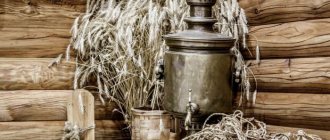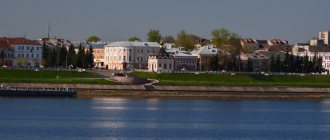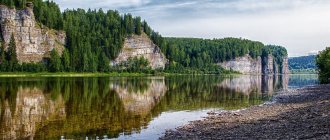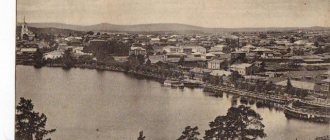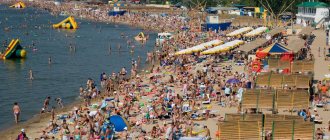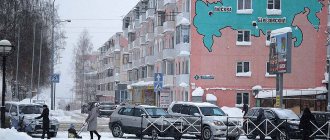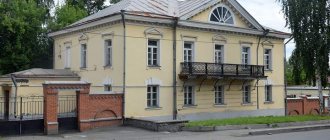Pervouralsk is known for its harmonious combination of sports and culture, which attracts tourists from all over the country. It is located in a mountainous area - between the peaks of the Ural ridge, on the banks of the Shaitanka River. The attractions in this city of the Sverdlovsk region will not leave indifferent anyone who decides to come here. The history of Pervouralsk began in 1732 with the small village of Vasilyevsko-Shaitansky, which gradually developed into a significant industrial and cultural center, receiving city status and its modern name.
Pervouralsk: attractions and interesting places
Pervouralsk is a city in the Sverdlovsk region, a large industrial and cultural center of the region.
The date of foundation is considered to be December 1, 1732, the day when the blast furnace of the ironworks produced the first cast iron. True, at that time it was not yet a city, but a village near a factory and it was called Vasilyevsko-Shaitansk. The settlement received its current name only in 1920. The city stands on a large water artery of the Ural region, the Chusovaya River, along which at one time the famous iron caravan, barges loaded with millions of pounds of cast iron, iron and products made from them, walked.
Sights of Pervouralsk
Pervouralsk owes its birth to the discovery of an iron ore deposit near Mount Volchaya (Volchikha) in 1702. In the summer of 1730, Nikita Demidov’s grandson, Vasily, began construction of a plant on the Shaitanka River. The river was “closed” with a one hundred and twenty fathom dam. Behind it stood factory buildings: a blast furnace, a fur and fur factory, a forge. On December 1, 1732, the first cast iron was smelted at the plant.
This is what the dam looked like. The body of the dam is made of larch and has not been rebuilt since its construction. It’s logical to start your city tour from here. This is what the dam looks like now.
The old photograph clearly shows the Temple in the name of the Holy Apostles Peter and Paul. The first wooden church was consecrated in 1752; it stood near the Moscow highway; there were 5 bells on the belfry. In the summer of 1821, a fire raged in the village and the church burned down. Instead, in 1822, the construction of a new temple was completed.
In 1930, the temple was closed, and at different times there were in this building a cinema, a local history museum, a weight repair shop, and a sausage factory. Then the building was blown up. Since 1990, the Temple has been revived, and the ringing of bells again floats over the city.
From the old dam you need to walk along the embankment, lined with slabs, to the bend. At the turn of the road, a two-story wooden house has been preserved. By its location you can determine where the main street, Lenin Street, was located. It housed administrative buildings, a bank, a bookstore, etc. The Moscow Highway passed along this street. While landscaping the area near another high-rise building (a yellow house on the shore of a pond), a part of old paving stones was found.
On the wide alley of Vatutina Street is a traditional gathering place for veterans of all branches of the military. From this place a wide staircase leads up to the current city center. At the very top you can see the Palace of Culture of the Novotrubny Plant.
We go up the steps, sometimes we stop to rest, and turn around!
Here we are on the square near the NTZ Department of Culture and Culture. The palace itself was built in 1969; its model was exhibited at the World Exhibition in Montreal. Magnificent mosaic panels on the facade symbolize work, creativity, science, creation.
Next to the palace is the Central City Library, with an excellent local history department. There are always exhibitions in the library - check it out, you won’t regret it! In summer there is a fountain. During the daytime, the square is full of mothers and grandmothers walking with their children; in the evening, it is a favorite place for young people.
The central square of the city is Victory Square. Naturally, a monument to Lenin. The city administration building, a once gray three-story building, is now decorated with “chimes” and illuminated at night.
This is where we begin our architectural journey. Before us is that part of Vatutina Street, which was built in the 50s of the 20th century. The houses are three-story, cinder block, decorated with stucco elements typical of classical architecture. The year of construction is sculpted on some houses.
Let's walk a block along Vatutina Street to the intersection with Herzen Street and turn right, walk between houses with turrets, walk one block and end up in the Park of Culture and Leisure. It’s worth a look - an island of real forest almost in the center of the city! Convenient playgrounds, benches, swings, attractions...
The mini-zoo in the park deserves attention; a ticket costs only 60 rubles, and you will get a lot of pleasure from interacting with the animals. You can see Altai deer, mouflons, camels, wolves, foxes, noses and almost all domestic animals - sheep, goats, ducks, geese, chickens, turkeys and many others. Among the exotic ones are ostriches.
If you're lucky, you can feed the squirrels; they are loved, protected, and pampered in the park...
After a walk in the park, we go back along Herzen Street, cross the already familiar Vatutina Street and immediately turn left into the courtyards. Once upon a time, the courtyards had flower beds, gazebos, fountains, cast fences... And now we find ourselves in a 1957 construction area. It was from here that the construction of large-panel residential buildings began. On one of them there is a sign: “The first panel residential building in Pervouralsk. Commissioned in May 1958." Living history!
And here is the house itself.
This birch grove was lovingly planted by the residents. How carefully the townspeople treated the new areas, how lovingly they equipped them!
We go further, we go out onto Chkalov Street. This yellow house houses the Metallurg cafe and the Assol snack bar - you can refresh yourself.
This is the area of the first multi-storey brick houses, construction of the 30s and 40s, as stated on the sign on the house at Herzen 7.
The next intersection takes us to Trubnikov Street. It is easy to recognize - one side of the street is made up of two-story houses, the other - five-story ones. Behind these five-story buildings is the Ship Grove. All that remained was the name - ship grade pine trees were straight, tall pine trees, without flaws, which were suitable for making ship masts. They gave the name to the area. Paradox - the birch grove is called Korabelnaya. This street arose along the road to neighboring Revda.
At the end of the street we see the only surviving wooden cottage. There were several such cottages on Shkolnaya, Volodarskogo, Papanintsev streets; in the courtyards there were cozy squares, sculptures, and fountains. There are still photographs of the “Elephant” fountain. The rotunda has survived to this day, although not in the best condition.
Then we move past the mosque and find ourselves in the village of the chrome peak plant. The history of the village begins in 1915; it was built next to the plant. The center of the village is the Lenin Club with a park and stadium. In the village there are monuments to Julius Fuchek and General Karbyshev.
Through the village we go to the railway station. From here you can go to Yekaterinburg. But it’s interesting to see another monument; not all Pervouralsk residents know about its existence. The memorial complex to the heroes of the Civil and Great Patriotic Wars was installed on the square near the plant management of JSC Khrompik. To see it you need to cross the railway pedestrian bridge.
Our little journey has come to an end. This article contains only a small corner of the city. I suggest you just come and see!
Innovation cultural center
The construction of the ICC took place with money from the federal budget, lasted three years, and was completed in 2016. Due to its unusual shape, the building was nicknamed the “innovative puck” and indeed it resembles this sports equipment. The building attracts attention, especially at night, as the unusual kinetic façade glows in the dark.
Within the walls of the ICC there are: a museum of mining civilization; design and invention laboratory; studio-museum of animation, occupies two whole floors; cinema. Exhibitions, concerts, festivals, competitions, educational and social events, city holidays and even sports competitions are regularly held here.
Chusovaya River and attractions
Chusovaya is a legendary river. And not by chance. The Urals without Chusova are like sails without a mast, like horses without a team. It’s not just the beauty of its shores, it was the strait through which Russia flowed into Siberia , and therefore turned out to be a vital organism - the Ural “mining civilization.”
Chusovaya River
Sculpture "Sable"
The sable is a dexterous, hardy animal that brings good luck and protects tourists in the forest and on the water. Tourists and guests of the camp site rub the sable's left paw and then relaxation, rafting, and hiking are simply magical. It is no coincidence that the sable sculpture was installed in 2014, because sable has long been considered the patron saint of the Ural forest.
The sable is an inhabitant of coniferous forests from the Northern Urals to the Pacific Ocean. This is a small predator, but it turns out that its main food is pine nuts. Images of sable are placed on the coats of arms of the Sverdlovsk region , Tyumen region , Yekaterinburg , Pervouralsk , Yakutsk , Novosibirsk , Verkhoturye , Lesosibirsk ...
Sable fur was expensive; for a long time in Russia it was used as a monetary measure. The iron pot cost exactly as much as the sable skins it contained.
Some historians draw an analogy between the properties of Ural iron and sable fur. Ural iron was obtained from high-mountain ore, which contained an admixture of copper. As a result, the iron was “soft” and had good malleability. Sable fur was also valued for its softness.
Wooden idols
Wooden idols of pagan gods were made for the filming of the feature film “Varvara” , which was filmed on the Chusovaya River , and after filming they were installed in 2010 as a temple, a Slavic temple, a place that preserves the wisdom of our ancestors.
Observation deck and Dog Ribs stone
View from the observation deck
The platform is located on top of the Dog Ribs stone . Climbing it opens up a beautiful view of the Chusovaya River and the Church of St. George the Victorious . Looking down you get the feeling of floating above this beauty. Try to stand here! Many people who visited the observation deck felt a surge of strength and creative ideas - fresh air, a light breeze, the sound of the forest - all this has an amazing effect.
Dog Ribs Rock is a small, low limestone rock in the form of inclined slabs. These inclined layers reminded people of dog ribs, which is where the name came from.
Village Sloboda
Church of St. George the Victorious , this is the main attraction of the ancient village of Sloboda , built in 1806. The village itself was founded in 1651, located between the Chusovaya and Utka , and was originally called Utkinskaya Sloboda .
Here the Chusovaya River makes one of its dizzying loops. It is curious that it was here that the city of Yekaterinburg . Vasily Nikitich Tatishchev considered Chusovskaya Sloboda for establishing the mining capital of the Urals . However, as we all know, in the end another place was chosen, on the Iset River .
Suspension Bridge (Annushkin Bridge)
A 100-meter-long suspension bridge connects the banks of the Chusovaya River . The bridge was built in 2013 for the pedestrian route “Chusovskaya Around the World” at the expense of philanthropist Anna Manekina .
Hold on to the air
In 2016, the Annushkin Bridge was overtaken by the elements and was washed away by the flood. In the same year, Annushkin Bridge was restored.
Adrenaline at 100%
The trip ended and the tourists, rested, having received a lot of useful information and a boost of energy, went home to Kirovgrad . The tourist and local history trip was organized by a member of the Council of Veterans, Nina Vasilievna Valutskaya, as part of the municipal program “Older Generation” . All participants of the trip express sincere gratitude for the opportunity to get acquainted with the beautiful places of the Urals .
Ski resort "Mount Pilnaya"
There was once a sawmill on the mountain from this fact, and the name Pilnaya came about. Currently, the mountain is located within the city limits. There are four ski slopes on its slopes, with a total length of almost three kilometers, with a maximum elevation difference of 100 meters.
For comfortable skiing, the resort has a convenient infrastructure. There are two modern lifts; cafes and rentals where you can rent skis or snowboards, as well as everything you need for skiing. For visitors who come with children, there is a children's room and a children's skating school. At night, the track is illuminated, which creates a special atmosphere when skiing.
Sports tourism in Pervouralsk and its surroundings
Winter sports are very popular in Pervouralsk, but in the summer, active recreation enthusiasts will have something to keep their muscles busy.
Mount Volchikha
- Coordinates on the map: 56.824332, 59.995587.
Volchikha is the highest mountain in the Yekaterinburg environs (526.3 m). It got its name from the fact that in the 18th century a large number of wolves lived in its forests, but today this place is safe for tourists.
In the summer, climbers come here. The rocky slopes of the mountain are used as a natural climbing wall. And in winter, the mountain is “captured” by skiers and snowboarders. During the snowy season, a funicular starts running on Volchikha, and ski slopes of different difficulty levels open.
Mount Teplaya
- GPS coordinates: 56.945609, 59.882977.
Mount Teplaya rises above the picturesque surroundings of the Chusovaya River. In past centuries, it played the role of a border between settlements, but now it serves as one of the most popular ski resorts.
The sports complex has 4 tracks, between which there are lines of coniferous forest. Here you can rent skis, snowboards and tubing, and after the rides, rent a gazebo and barbecue on the edge of the forest.
Mount Pilnaya
- Address: st. Prospector, 2B.
The name of the mountain is due to the fact that there was once a sawmill on it. Currently, the forest expanses are not subject to deforestation and have restored their richness. The slopes of Mount Pilnaya are equipped with ski slopes, the total length of which is 3 km. There are cafes on the mountain where you can relax and have a snack at the end of an active day.
Ice Sports Palace
- Address: ave. Ilyich, 2B.
The Pervouralsk Sports Palace was opened in 1968 and became the first ice palace in the Urals. The sports complex is located in a spacious blue and white building, which includes an artificial ice rink where hockey matches and figure skating performances are held, a fitness room, a choreography room, a room for playing table tennis and a buffet.
The “Start” sports school has been opened at the ice palace, producing professional hockey players and figure skaters. The Sports Palace is open not only to section students; anyone can visit it. Skate rentals and a blade sharpening station are available for visitors here.
Stela Europe – Asia
Not far from the city on the slope of Mount Berezovaya, there is the highest point of the Siberian Highway. Here, back in 1837, a memorial sign Europe - Asia was installed, it was installed specifically for the arrival of Alexander II, who traveled here with the poet Vasily Andreevich Zhukovsky.
Initially, the monument was wooden in the shape of a pyramid, and later it was replaced by a majestic stone stele with a double-headed eagle at the top. During the Civil War, the monument, crowned with the symbol of royal power, was destroyed. The Soviet authorities also erected a stone memorial sign, much more modest than in Tsarist times. Now it has been moved a little lower to the water source. The monument acquired its modern appearance in 2008. Now it is a stele made of red granite, screwed on, as in pre-revolutionary years, with a double-headed eagle.
People's House
The only architectural monument of the 19th century in Pervouralsk. The exact date of construction of the house is unknown. The building was once part of a city estate, which, in addition to the main house, also included a barn, a massive gate and several outbuildings.
To this day, only the main house of the estate has survived. This is a two-story building, built in the traditional style of the 19th century, the first floor is brick, the second is wooden. The house is decorated with numerous carved elements. Folk festivals, music and folklore events are held here.
Palace of Culture "Fireproofer"
The building of the Palace of Culture was built in 1956. The facade of the Palace of Culture and its architecture have not undergone major changes since then. Which is not typical for other urban buildings of that period of history. This makes the Palace of Culture a unique building in Pervouralsk, where there is not much that reminds us of the city's long history. The Ogneuporshchik cultural center has a hall for 600 seats . Various concerts, festivals, and other public events are often held here.
What is Pervouralsk like?
In the center of the Eurasian continent is the city of Pervouralsk, Sverdlovsk region. The distance to Yekaterinburg (regional center) is 40 km, and to Moscow – 1627 km. The population is about 124 thousand people.
The territory was formed in a gorge between the mountains. Near the city's border lies the dividing line between Asia and Europe.
The main enterprises of the city: Pervouralsk Novotrubny, Pervouralsk City Dairy, Pervouralsk Dinas Plant and many others.
Pervouralsk is a connecting point of the Trans-Siberian Railway, connecting Yekaterinburg, St. Petersburg, Perm and Moscow.
Brief historical background
The life of Pervouralsk began back in the 18th century, when iron ore deposits were discovered by ore explorer Fyodor Utkin. The settlement did not appear immediately, but only 20 years later and was called the village of Podvoloshnaya.
In 1732, on December 1, the first local factory produced a batch of cast iron. Historically, it was this number that began to be considered the founding date.
During the 18-19 centuries, the area around the settlement was actively explored, several factories were opened, for example, the Chrompikovsky plant, the Shaitansky chemical plant, the Verkh-Isetsky plant and others.
By the beginning of the 20th century, the village of Podvoloshnaya had already changed its name several times and in 1933 became the city of Pervouralsk.
Until today, the city is the largest industrial center of the Urals, its culture and attractions are developing. Pervouralsk becomes more beautiful and interesting every year. There's always something new coming up.
Sights of the city of Pervouralsk: monuments and sculptures
The monument to D. M. Karbyshev, on Karbysheva Street, 2, was erected in 1968. The author is V. E. Egorov. The sculpture is considered one of several dedicated to the events of the war and its heroes. Dmitry Mikhailovich - went through 4 wars, was posthumously awarded the Title of Hero of the Soviet Union and Knight of the Order of Lenin. Streets, educational institutions and organizations throughout the country are named in his honor.
The main attraction of Pervouralsk is the “Europe-Asia” obelisk. The official border between the two constituent parts of the continent runs through the Ural Mountains. In some places there are special obelisks symbolizing division. In Pervouralsk, on Mount Berezovaya there is one of them. Its history began back in 1837, then it was made of wood, more like a pyramid. In 1873, the pillar was replaced with a marble obelisk mounted on a pedestal. The last reconstruction took place in 2008.
Monument to the first Ural residents who died in local conflicts in the park on Vatutina Street in 2002. The initiative to create it arose from members of the organization of Afghans who suffered in the conflict. Their idea was supported by city enterprises. The composition is an infantry fighting vehicle located on a special pedestal.
Unusual architectural solutions of the city
The bishop's courtyard in the name of the Holy Great Martyr Catherine is the youngest religious building in Pervouralsk. In 2012, it opened at 89 Weiner Street. The stone belfry and gilded domes make the atmosphere sublime, but at the same time calm.
The Didinsky Tunnel is a landmark of Pervouralsk, the photo of which is associated with a scene from a thriller. It is located 1.5 km from the Didinsky platform of the station of the same name, which is part of the Pervouralsky urban district. The structure was opened in 1918 and closed in 1995. Since then, thrill-seekers have come here to tickle their nerves. It's dark and damp inside. Along the road there are wells into which you can go down and inspect the drainage tunnels. Regular visitors recommend carrying out the expedition in waterproof clothing, rubber boots and a flashlight.
Bilimbay
Pensioners of Kirovgrad listened with interest to the guide’s story. Bilimbay was formed in 1734 as a factory village at the Bilimbaevsky iron foundry , which belonged to the Stroganovs .
The guide's story about the sights of Bilimbay
The village is located 15 km from Pervouralsk along the Pervouralsk - Shalya highway.
Holy Trinity Church
The main attraction of Bilimbay is the Holy Trinity Church . The stone three-altar church was founded in 1820. Built at the expense of the factory owners Stroganov .
Holy Trinity Church
The main temple was consecrated on November 5, 1839. A distinctive feature of this particular temple was the cast-iron bases of the columns and cast-iron Corinthian capitals. The builders knew which parts of the columns were most susceptible to climate change and decided to make them metal. Apparently there are many iron parts in the structure of the temple itself. Savva Yakovlev-Sobakin wrote to his clerk in Byngi : “Make a very strong and beautiful temple there out of cast iron...”. The clerk did not build the church from pure cast iron, but included many cast iron parts in the structure. Probably the Stroganov barons , to whom Bilimbai , thought similarly.
The cast iron capitals of the columns are of fairly fine casting. They were previously painted white along with the columns, so as not to stand out. Over the years, the whitewash has peeled off and the metal has become visible.
Legend
A beautiful legend was told by the guide. During the construction of the temple, a burial with the incorruptible remains of a Bashkir woman was opened. When the Russians first came to these places, one Bashkir leader named Bilim , after whom the village was named. He was rich, this Bilim , that’s why they called him “bai”. Probably, in all Turkic languages this word means “rich”.
Bilim
did not want to just give up his land to the new owners. He began to fight. And one day the Bashkirs captured a young Russian officer. And Bilim had a niece, her name was Baka .
She fell in love with the captured officer and the young people decided to escape. Bai found out about this and killed both of them. And when they were digging a foundation pit for the temple in the 20s of the last century, they found a coffin. In it lay a beautiful girl in Bashkir attire. The decay did not touch the young face and she was as beautiful as in life. For some reason, people decided that this was Baka . And they thought that the earth did not accept her. Then they sprinkled holy water on the body. And the body and clothes scattered and all that was left of the beauty was a pile of ashes.
First jet aircraft
The village became especially famous during the Great Patriotic War . At this time, the design bureau of M.Ya. Mil , which was developing the first helicopter and the design bureau of V.F. Bolkhovitinov and A.M. Isaev , who created the first jet aircraft BI-1 . During the Second World War, an experimental model of the first Russian helicopter was assembled in the church building.
Cultural enrichment: theaters and cinema
You can spend an interesting weekend by visiting the “Option” drama theater on the street. Komsomolskaya, 1v. He appeared on an amateur basis in 1982. It was played by ordinary city schoolchildren, who then, having received a professional education, returned to “Variant”. After 10 years, the theater became a professional city theater, and in 1993 “Variant” entered its own separate building. In each new season, the actors delight with new, diverse productions designed for the discerning viewer.
The city's cinemas are among the attractions of Pervouralsk. After all, there are only two of them: “Sphere” and “Sunrise”.
The first one is located at 31 Ilyich Ave., in the Stroitel shopping center. The auditorium is designed for 280 people. It shows films not only in regular format, but also in 3D.
Cinema "Voskhod" on the street. Gagarina, 41, with two halls, shows film premieres and actively reviews film news on its website.
Pervouralsk museums and theaters
The cultural life of the city revolves around museum exhibitions and theatrical plays. They bring a touch of spirituality into the daily life of city residents and add variety to the vacations of Pervouralsk guests.
Historical Museum "City of Pervouralsk"
- Address: Karbysheva street, 1.
The Museum of the History of Pervouralsk is the largest and most important exhibition center in the city. It was founded in December 1987 on the basis of the museum. The exhibition is housed in four halls, each of which is dedicated to a separate stage in the formation of Pervouralsk.
- The first hall presents the history of the construction of the plant and its work at the beginning of the 20th century.
- The exhibition in the second hall covers the life of the city during the Great Patriotic War. It tells about the evacuation of the plant, what contribution the Pervouralsk home front workers made to the achievement of the Great Victory, as well as about the voluntary tank corps.
- The third hall is dedicated to the post-war development of the city and the plant.
- The fourth hall is a venue for temporary exhibitions on historical and ethnographic topics.
The museum pays great attention to the military-patriotic education of the new generation. School and student excursions are often combined with meetings with combatants, politicians and historians.
The Wax Museum
- Address: pl. Pobeda, 10.
Some travelers rightly call the wax museum the “highlight” of Pervouralsk. Not every city can boast of an establishment of this kind. Several halls display figures of rulers, poets, military leaders and other personalities known to us from the history of Russia.
Made of wax, the sculptures here reflect the individual characteristics of the characters: eye color, posture, posture and clothing style. The costume designers did not miss even small details, such as brooches and hairpins in the ladies' attire.
The museum's collection is not very rich. There are not as many sculptures in it as in Madame Tussauds London or the St. Petersburg wax exhibition, however, it is very interesting and deserves attention. The museum gains additional points due to its advantageous location in the city center.
Drama Theater "Option"
- Address: st. Lenina, 18A.
The Pervouralsk Theater began its history in 1980. His first troupe consisted of graduates of local schools - young enthusiasts who gained experience and mastered the dramaturgy of such writers as Shakespeare, Gogol and Ostrovsky. The Variant theater received the status of a professional theater in the early 1990s, at which time it was allocated a separate building.
Today “Variant” is one of the most significant cultural centers of Pervouralsk. Its repertoire includes productions for adults, children's plays, classical and original plays, as well as dance shows and music concerts. The local troupe regularly tours and has become famous in Perm, Kurgan and Tyumen.
Where to relax with the whole family?
The Park of New Culture is a landmark of Pervouralsk, a photo and description of which is given in detail on its website. The object is located at the address: st. Gagarina, 24A. Was founded in 2016. The park area is divided into zones that will appeal to the whole family:
- Attractions, including the Ferris wheel, the Bars carousel, Autodrome, Flying Saucer, Airplanes, etc.
- Husky Park, where you can meet husky dogs, take pictures with them and hug them.
- Rope town "Beehive".
- Winter attraction “Ice Banana” - riding in the snow on an inflatable banana.
- A zoo where you can choose an animal and care for it. It is inhabited by: bear, fox, raccoon, ostrich and others.
The city also has a petting zoo “Funny Little Animals” at 13a Ilyich Ave., in the Megapolis shopping center. Here you can play and touch rabbits, chickens, mini pigs, kids, ducklings, guinea pigs and other animals. The zoo is open on weekdays from 11 am to 8 pm, and on weekends from 10 am.
What to see first in Pervouralsk
A sightseeing tour of Pervouralsk, as a rule, begins with an examination of its main attractions, the so-called “calling cards” that create the face of the city.
Innovation cultural center
- Address: st. Lenina, 18B.
Pervouralsk ICC is the most recognizable building in the city, which has become its symbol and business card. Construction of the center started in 2013 and lasted three years. The result of the carefully thought-out work of the architects was an unusual structure in the high-tech style. It rises above the city like a gigantic glass ball and sparkles in the sun.
Due to its rounded, flattened shape, the building was jokingly nicknamed the “innovation puck.” The multi-storey ICC houses various cultural, educational and entertainment institutions:
- Extensive library.
- Cinema.
- Museum of Mining Civilization. The exposition consists of several stands telling about the cities of the Sverdlovsk region.
- Mineralogical Museum. The exhibition presents a collection of minerals that abound in the Ural Mountains.
- Children's technology park "Quantorium".
The Innovation Cultural Center is one of the most visited institutions in Pervouralsk. It often organizes public events, cultural evenings and children's parties.
Park of New Culture
- Address: st. Gagarina, 24A.
The New Culture Park is a great place to relax with children. On its territory there is a huge number of attractions suitable for children of different ages. Here you can ride the Ferris wheel (a great opportunity to see the city from a bird's eye view), spin in the Cups and test your agility in the Beehive rope park.
Of particular interest is the Husky Park, a corner of Alaska in the Urals, where trained sled dogs await visitors. A visit to the park provides a wonderful opportunity to play with Siberian Huskies and Nenets Samoyeds and ride in a real dog sled (in winter).
The zoo, where bears, wolverines, wolves, foxes, deer and camels live, is no less in demand among the little guests of the Park of New Culture. We can safely say that it’s easy to spend a whole day on the territory of this multifaceted attraction and never get bored - 99% of reviews confirm this fact.
Church of Peter and Paul
- Address: st. Ordzhonikidze, 1.
The history of the Peter and Paul Church began in August 1748, when a wooden structure topped with a cross rose in the middle of the Vasilyevsko-Shaitansky village. The small church was destroyed by a large fire that broke out in the city in April 1820. The restoration of the temple began immediately after the disaster. A new (this time stone) church was laid on the old foundation.
For a long time this temple was considered one of the best in the diocese of Yekaterinburg. There was a parish school under him, in which more students studied than in all the nearby villages.
The era of prosperity gave way to times of decline. In 1922, persecution for the faith began and the church building was taken away from the parishioners. The domes, bells and church utensils were melted down, and the building itself remained abandoned. In 1935, its interior was renovated and converted into a cinema; later, local history museums and a living corner were opened in the adjacent halls.
During the Second World War, entertainment facilities in the former church were closed, and a laundry room was installed in the rooms, where women washed soldiers’ uniforms from dirt and blood. In the post-war years, the laundry was closed as unnecessary and its place was taken by a sausage shop. Tormented by time, war and endless reconstruction, the building was blown up in the 1970s.
The temple was revived in 1990. The new building was built on the ruins of its predecessor. The newly born Peter and Paul Church is a monumental structure made of red brick. The main building in the classicist style is crowned with a golden dome, and the adjacent bell tower is crowned with a high spire. Today, the Church of Peter and Paul welcomes parishioners and students of the Orthodox school in the same way as 200 years ago.
Natural oases of Pervouralsk
The spring of Fyodor Danilov is a landmark of Pervouralsk, created by nature. It is located 30 m from the Europe-Asia obelisk (the second in the city district) on Talitsa Street.
It was ennobled and named in honor of the 100th anniversary of the birth of the famous metallurgist, director of the new pipe plant of Pervouralsk.
On Trubnikov Street, 56v, there is the “Ship Grove” - a birch park where city residents love to stroll. It has asphalt paths and the area is always cleaned.
In the village of Pilnaya in Pervouralsk there is a ski complex on the mountain of the same name. It has 4 tracks. The height difference between the top and the bottom is 100 m. The infrastructure allows you to actively spend the whole weekend: cafes, restaurants, hotels are located nearby.
How to get to the city?
The starting point can be any corner of Russia. The first thing you need to do is get to Yekaterinburg (by air, car, railway transport).
From the capital of the Sverdlovsk region to Pervouralsk you will need to cover only 44 km. There are several ways to do this:
- By bus, which runs regularly. Travel time is about 1.2 hours.
- By train - the journey takes only an hour, as well as by the fast train "Lastochka" (delivery takes about 50 minutes).
- Taxi or your own car. Typically, arrival time varies around an hour.
Tourist base "Chusovaya"
The final destination of our trip was the Chusovaya tourist center , where all tourists rested and got acquainted with nature and beautiful natural places.
The Chusovaya camp site is located on the left bank of the Chusovaya River behind the village of Sloboda (until 1987 it was called Kourovskaya after the name of the railway station located near it). The camp site is located on a high rock called “Dog Ribs” . This is the first camp site in the Urals, converted from an old tannery building. It received its first tourists on October 29, 1934. In 1941-1945, a hospital for soldiers of the Great Patriotic War . Nowadays, the Chusovaya tourist center is one of the largest in the Urals .
